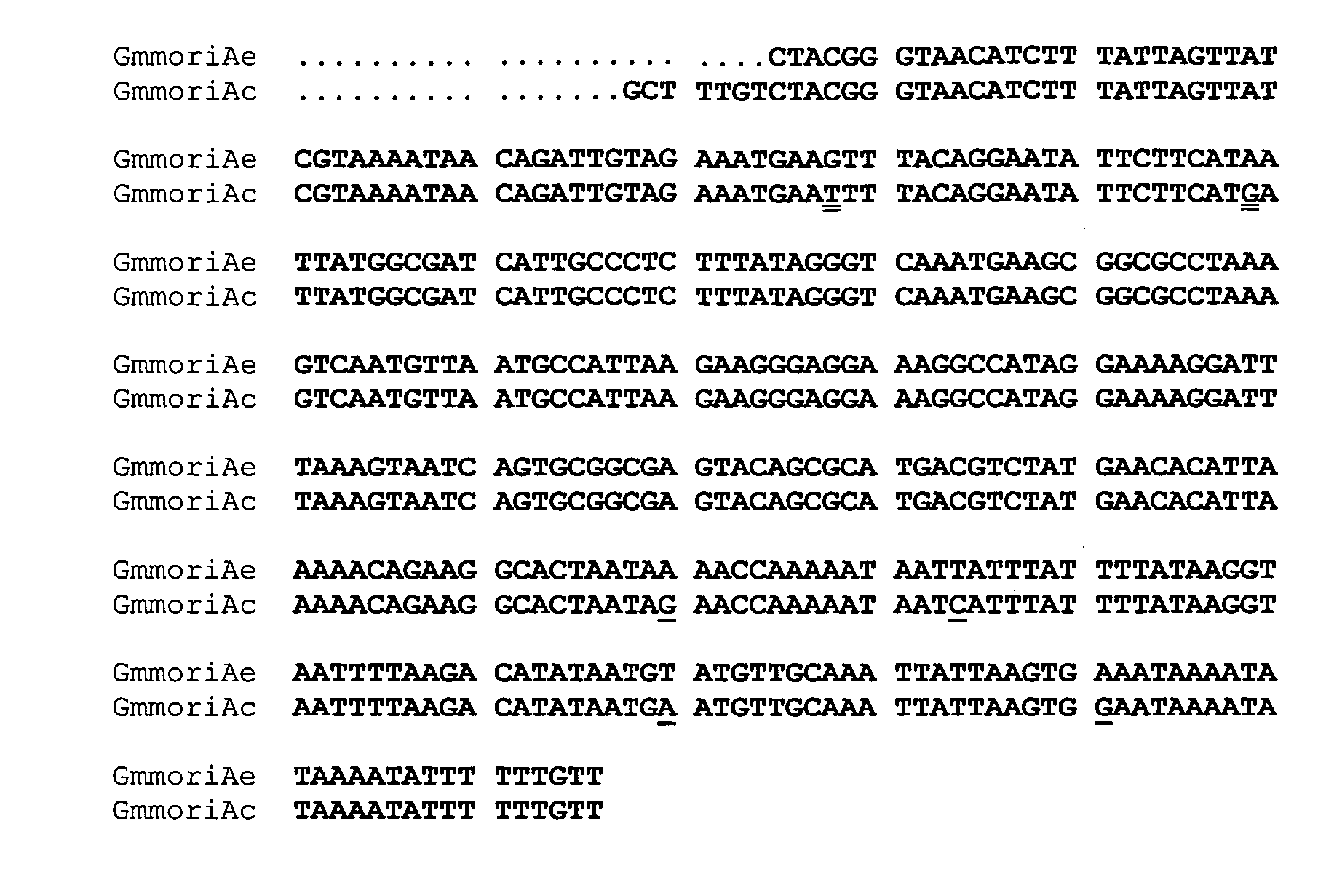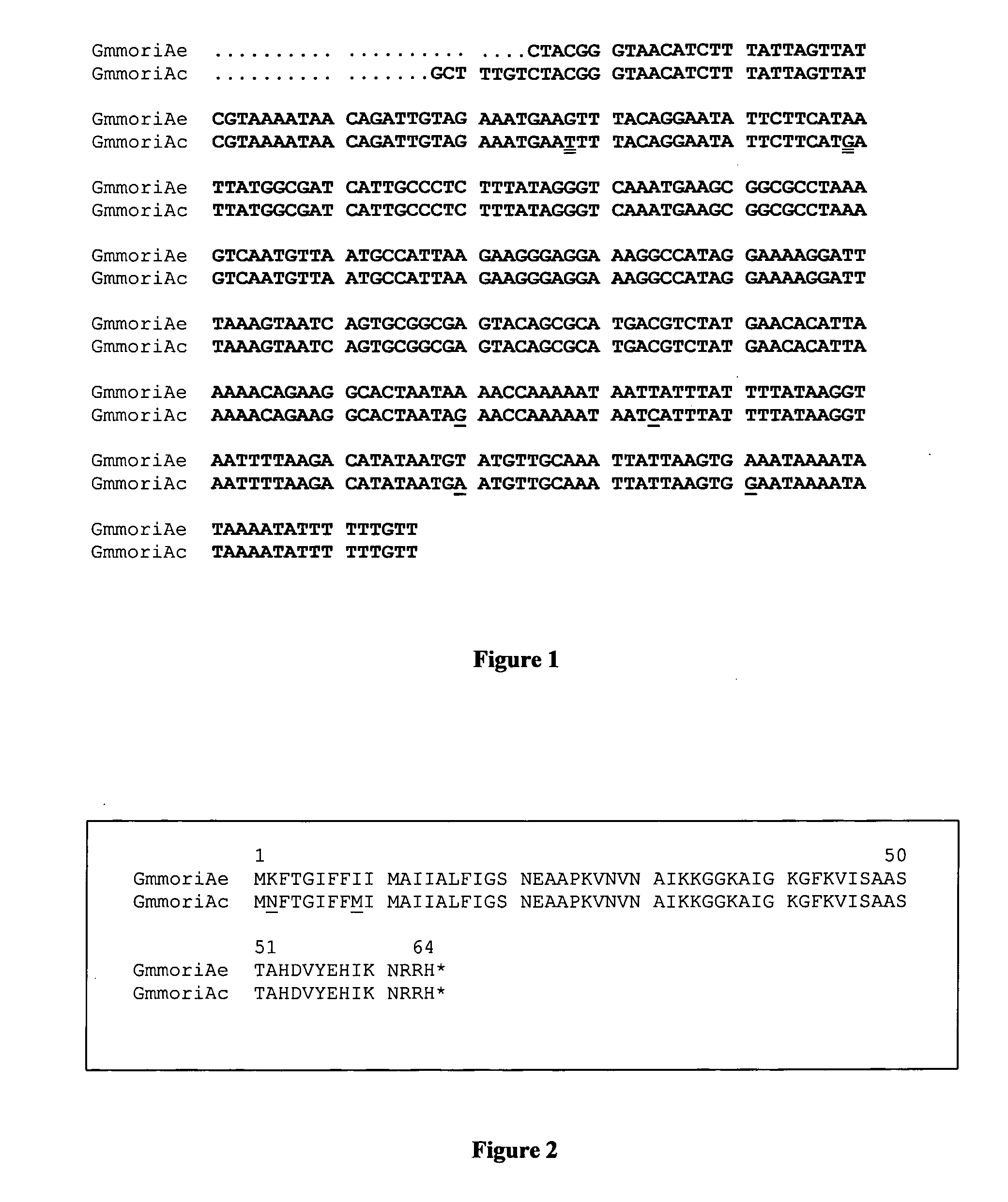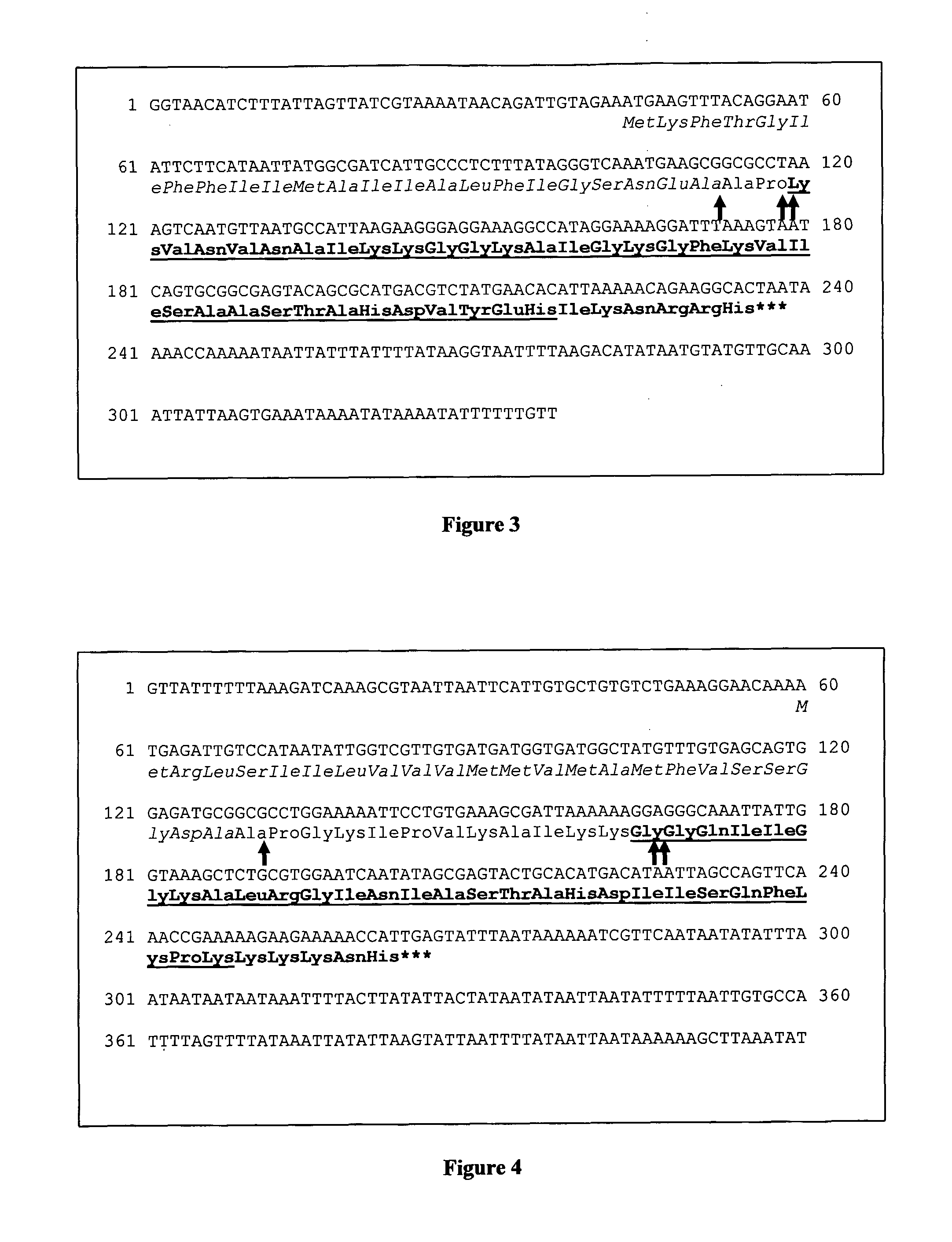Antifungal Peptides
a technology of antifungal peptides and peptides, which is applied in the direction of peptide/protein ingredients, depsipeptides, dna/rna fragmentation, etc., can solve the problems of large economic losses in agricultural and horticultural activities, significant problems in the field of antifungal peptides, etc., and achieve the effect of improving the stability of a peptid
- Summary
- Abstract
- Description
- Claims
- Application Information
AI Technical Summary
Benefits of technology
Problems solved by technology
Method used
Image
Examples
example 2
Identification of cDNAs Encoding G. mellonella Moricin-Like Peptides
Preparation of Total RNA and Poly(A)+ RNA
[0285]Fat body tissue was dissected from G. mellonella larvae at 24 hours after injection with E. coli and M. luteus cell suspension. Larvae that had been chilled on ice for at least 30 min were pinned in a Sylgard dish under ice-cold PBS and opened by a longitudinal incision down the dorsal midline. The gut was removed and fat body was collected with fine watch-makers forceps. Dissected fat body was briefly blotted on absorbent tissue and snap-frozen in a microfuge tube held in liquid nitrogen. The frozen tissues were stored at −80° C.
[0286]Total RNA was isolated using Trizol reagent (Astral Scientific). Briefly, approximately 500 mg of frozen fat body tissue was resuspended in 1 mL of Trizol reagent and homogenised in a Polytron tissue homogeniser.
[0287]Polyadenylated RNA was isolated by two rounds of selection on oligo(dT)-cellulose spun-column chromatography using the mRN...
example 4
Expression of Antifungal Peptides in Arabidopsis
Agrobacterium-mediated Transformation of Arabidopsis with the G. mellonella Gm-moricinA Gene
[0316]DNA encoding Gm-moricinA was cloned into the Agrobacterium transfer vector, p277 (obtained from CSIRO Plant Industry, Canberra, Australia). This vector was constructed by inserting the NotI frag from pART7 into pART27 (Gleave, 1992). The p277 vector contains the CaMV 35S promoter and OCS terminator for plant expression, markers for antibiotic selection, and the sequences required for plant transformation. Three Gm-moricinA DNA constructs were chosen for transformation into Arabidopsis thaliana—the mature Gm-moricinA with no signal peptide, the full-length Gm-moricinA including its native signal peptide, and a fusion consisting of an Arabidopsis vacuolar basic chitinase signal peptide and the mature Gm-moricinA sequence. These constructs were synthesised by PCR and directionally cloned into the p277 transfer plasmid.
[0317]Transformation o...
example 5
Preparation and Use of G. mellonella Gm-moricinA Antiserum
[0328]Antibodies were raised against synthetic Gm-moricinA, using standard procedures (see, for example, Ed Harlow and David Lane (editors) Antibodies: A Laboratory Manual, Cold Spring Harbour Laboratory, (1988)) for subcutaneous injection of New Zealand white rabbits at the Institute for Medical and Veterinary Science (Adelaide, Australia). One rabbit was treated in the standard manner, with a primary inoculation of 1 mg of peptide followed by three 0.83 mg boosts. A second rabbit was inoculated with 0.1 mg of peptide plus aluminium hydroxide, followed by three boosts of 0.83 mg of peptide with aluminium hydroxide. Approximately 40 ml of serum was collected from each rabbit following the final boost. The antiserum was used without further purification, and evaluated by ELISA, dot blot and Western blot.
[0329]Protein electrophoresis was performed using 10% Bis-Tris NuPAGE Novex pre-cast gels (Invitrogen) and a MES running buff...
PUM
| Property | Measurement | Unit |
|---|---|---|
| Fraction | aaaaa | aaaaa |
| Fraction | aaaaa | aaaaa |
| Fraction | aaaaa | aaaaa |
Abstract
Description
Claims
Application Information
 Login to View More
Login to View More - R&D
- Intellectual Property
- Life Sciences
- Materials
- Tech Scout
- Unparalleled Data Quality
- Higher Quality Content
- 60% Fewer Hallucinations
Browse by: Latest US Patents, China's latest patents, Technical Efficacy Thesaurus, Application Domain, Technology Topic, Popular Technical Reports.
© 2025 PatSnap. All rights reserved.Legal|Privacy policy|Modern Slavery Act Transparency Statement|Sitemap|About US| Contact US: help@patsnap.com



